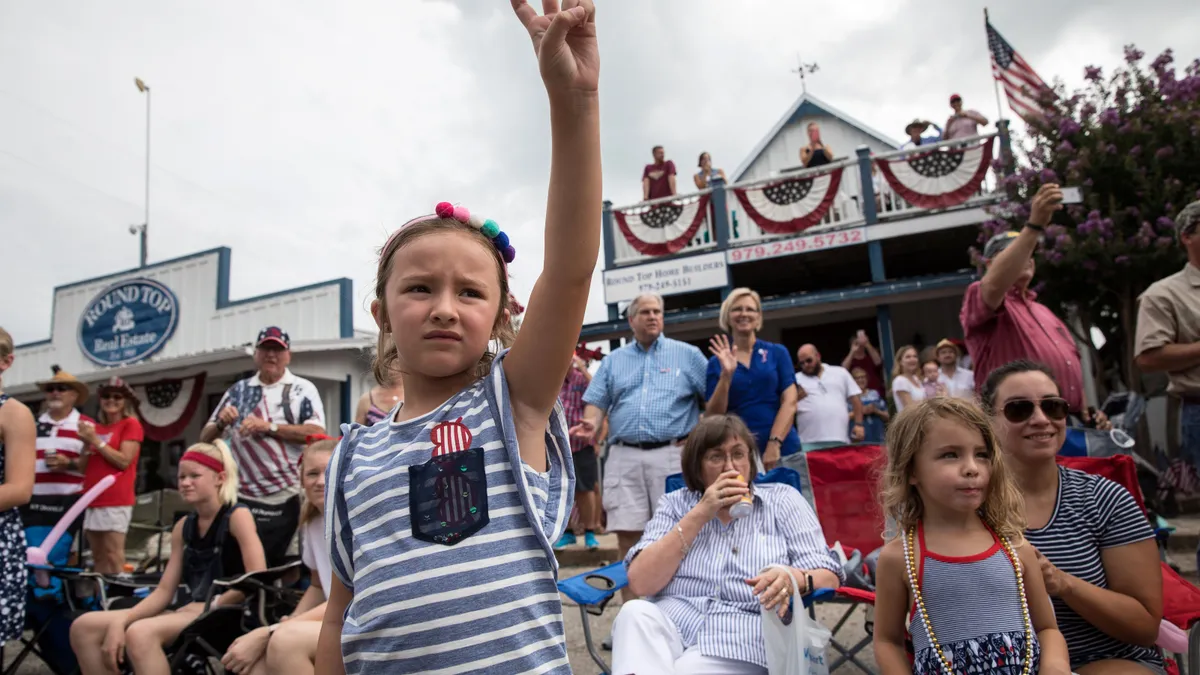Dive Brief:
- Despite rising concerns about inflation, 84% of consumers plan on celebrating the Fourth of July, according to a new survey by Numerator. However, 53% of respondents anticipate inflation and high gas prices to impact their holiday plans.
- The majority (64%) plan on spending less than $100, with 28% planning to spend more than $100. Younger generations are more likely to spend more, with Gen X having the highest chance of spending above $100. Thirty-nine percent of respondents anticipate buying less items than in years prior, with 62% saying they plan to take advantage of sales.
- As inflationary woes grow and consumers get hit at the gas pump, many are cutting back on spending and shifting where their money is going. However, how consumers adjust spending habits for holidays during inflationary periods largely depends on the generation, the study found.
Dive Insight:
Last year saw an increase in Fourth of July spending as consumers were looking forward to one of the first opportunities for a family gathering since the start of the COVID-19 pandemic. However, consumers are looking to a more laid back Fourth of July celebration in 2022 as inflation grows and the possibility of a recession looms.
Money saving strategies consumers plan on employing for the upcoming holiday include preparing more budget-friendly meals (37%), using more coupons (36%) and switching to store or private-label brands (26%). Twenty-four percent of consumers plan on cutting back on decorations and 29% plan on cutting back on fireworks and eating out. Numerator’s 2022 Independence Day survey was conducted in early June among 1,259 individuals.
Despite limiting their spending, 95% of consumers plan on purchasing something for the holiday with snacks (60%) and meat and seafood (56%) being on the top of the grocery list, followed by fruits and vegetables (45%) and side dishes (45%). This is unsurprising, as grilling remains the most popular July Fourth activity, with 60% of consumers saying they have plans to grill, down 5 points from last year. However, spending on meat and seafood is one place consumers plan to cut back, with 25% planning on purchasing less than in previous years. Between April 2021 and April 2022, chicken prices have seen a 16.4% increase, beef and veal saw a 14.3% increase, pork saw a 13.7% increase and seafood saw a 11.9% increase.
Alcohol is a priority for many, with 45% of consumers saying they intend on purchasing some for the holiday. Preference varied greatly by generation, with boomers more likely to purchase wine while younger consumers were more likely to purchase seltzers and ready to drink cocktails. Mike’s Hard was the top choice for 43% of young consumers, followed by White Claw (34%), Truly (32%), Bud Light Seltzer (16%), Jose Cuervo (14%), High Noon (14%), and Topo Chico (8%). In some positive news for the struggling beer industry, beer remained the top choice for consumers overall, with 74% expecting to make a purchase for the holiday.
Alcohol choice is not the only Fourth of July mainstay getting caught up in the generational divide. How one intends to celebrate is highly dependent on age as well. Millennials are more likely to attend or host a party than other consumers; Gen X is more likely to go out, which is inline with their intent to spend more, while boomers are more likely to gather with family and friends. Fifty-three percent of consumers plan on a gathering with family and friends, down 12 points from 2021. This may be reflective of rising gas prices, with 27% of consumers saying they plan on traveling less due to gas price increases.
Retail preferences are also highly divided by generation. Gen Z is more than twice as likely to favor Costco.com and millennials are 33% more likely to shop at Target.com. Both generations are less likely to shop at Walmart.com, reflective of the company’s slumping business. However, 88% of consumers plan on doing their July Fourth shopping in-store, with grocery stores (68%) and big box stores (47%) being the most popular options. Twenty-five percent of consumers plan on shopping at dollar and discount stores to save money.















